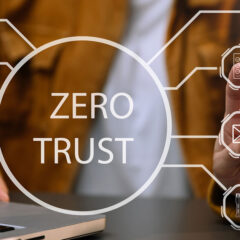How to Improve Asset Tracking with IoT
From fax machines and forklifts to smartphones and shipping containers, most organizations own, manage and maintain scores of assets necessary for their critical operations. Keeping track of everything has always been incredibly challenging, particularly for companies that operate across broad geographic regions.
Various studies indicate that lost or stolen assets cost U.S. companies nearly $50 billion a year. Beyond the lost investment in the assets themselves, companies incur a variety of other expenses related to asset replacement, unplanned downtime, productivity loss, cyber risks, legal and compliance efforts, and rising insurance premiums.
Increasing numbers of organizations are leveraging their Internet of Things (IoT) infrastructure to reduce those costs through enhanced asset tracking. In fact, nearly a third of U.S. companies say asset tracking is their primary IoT use case, according to a Nemertes Research survey.
A separate study by ABI Research finds that asset tracking is the leading driver of IoT expansion. The firm predicts that asset tracking device shipments will see a 51 percent growth rate through 2024.
Increasing Visibility
Attaching low-cost and low-power IoT sensors to critical assets can help organizations gain long-distance visibility into the movement and function of all types of assets within facilities and across regions and countries. Using GPS, cell tower triangulation, ultra-wideband and low-power wide-area network (LPWAN) connectivity, IoT tracking systems can pinpoint the location of assets within just a couple of feet.
Connected devices automatically send real-time data across the Internet to IoT-enabled asset management software without any human intervention. That ensures much greater accuracy than still-common manual, spreadsheet-based tracking processes.
Best of all, IoT tracking systems can provide more than just location. Sensors can be configured to collect and transmit real-time data related to environmental conditions, battery life, inventory levels, functional status and more. This data can help organizations assess assets through their functional lifecycle, accurately recording how and when they are purchased, deployed, maintained, upgraded and retired.
Collected data can then be warehoused for additional analysis. Powerful, cloud-based predictive analytics solutions can apply machine learning algorithms to correlate historical and real-time asset performance data, maintenance records, inspection reports and environmental data to assess utilization rates, predict when failures might occur and revise maintenance schedules. Data can be leveraged to accurately forecast future costs and budgeting requirements allowing organizations to tightly control costs and evaluate the impact of events to the bottom line.
Enhancing Security
IoT tracking can also improve security by providing increased visibility into widely distributed IT assets. With huge numbers of employees working remotely, administrators need to know which devices are connecting to the network so they can ensure the devices have the latest firmware and operating system patches and are compliant with security policies. Real-time IoT data can help companies ensure that connected devices are fully protected, and that data coming from those devices is transmitted safely and securely. In addition, end-to-end encryption ensures that sensitive information transmitted by devices cannot be stolen or manipulated.
Early adoption of IoT asset tracking was in the fleet, container and logistics industries to provide basic data on the location and condition of assets in transit. As IoT devices become ever more functional and miniaturized, they are being used for more granular tracking at the pallet, package or item level.
Reducing loss and theft is an important capability that goes straight to the bottom line. Nevertheless, a recent survey by the TEC advisory firm found that about a third of U.S. companies don’t track their assets at all. Of those reporting they do track assets, two-thirds said they still do so manually.
IoT asset tracking is a great option for companies looking to gain accurate insights into the location, status and health of their critical resources. That’s why we’ve made it one of the key capabilities in our IoT Visibility platform. Contact us to learn how our IoT data collection and predictive analytics capabilities can help you can develop actionable insights about your critical assets.

Jason Schwakopf
Senior Sales EngineerRecent events have caused a paradigm shift for many companies, accelerating their desire to better leverage IoT. Supply chain, healthcare, advanced living care, retail and other service industries are going to be looking at ways to be “touchless” as much as possible. Enterprise systems will need a new level of flexibility, accessibility and above all, security.
Get to know Jason



